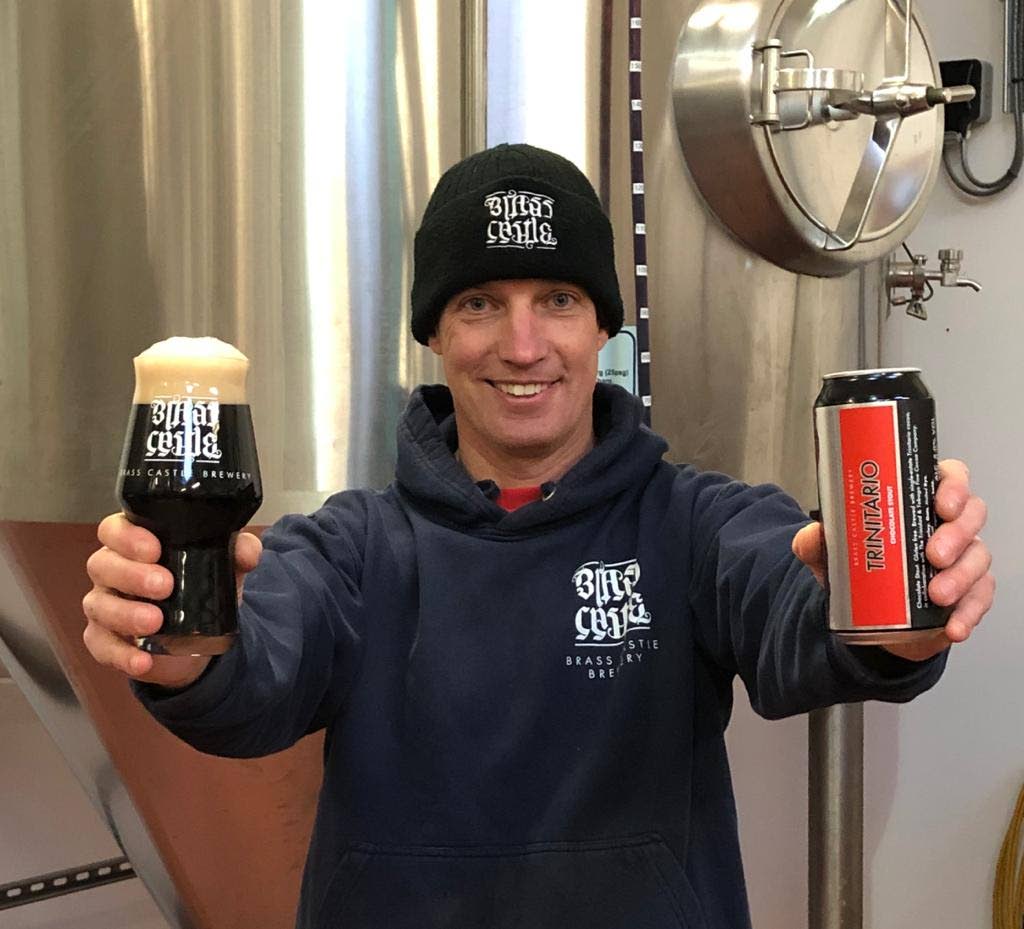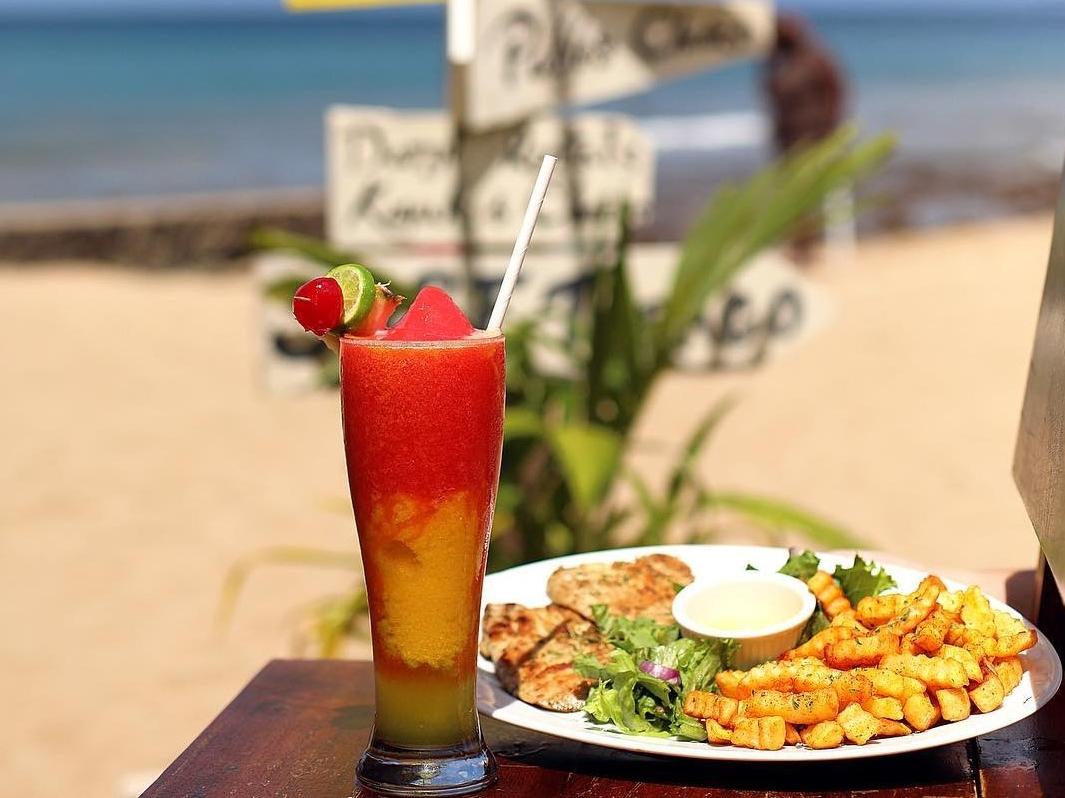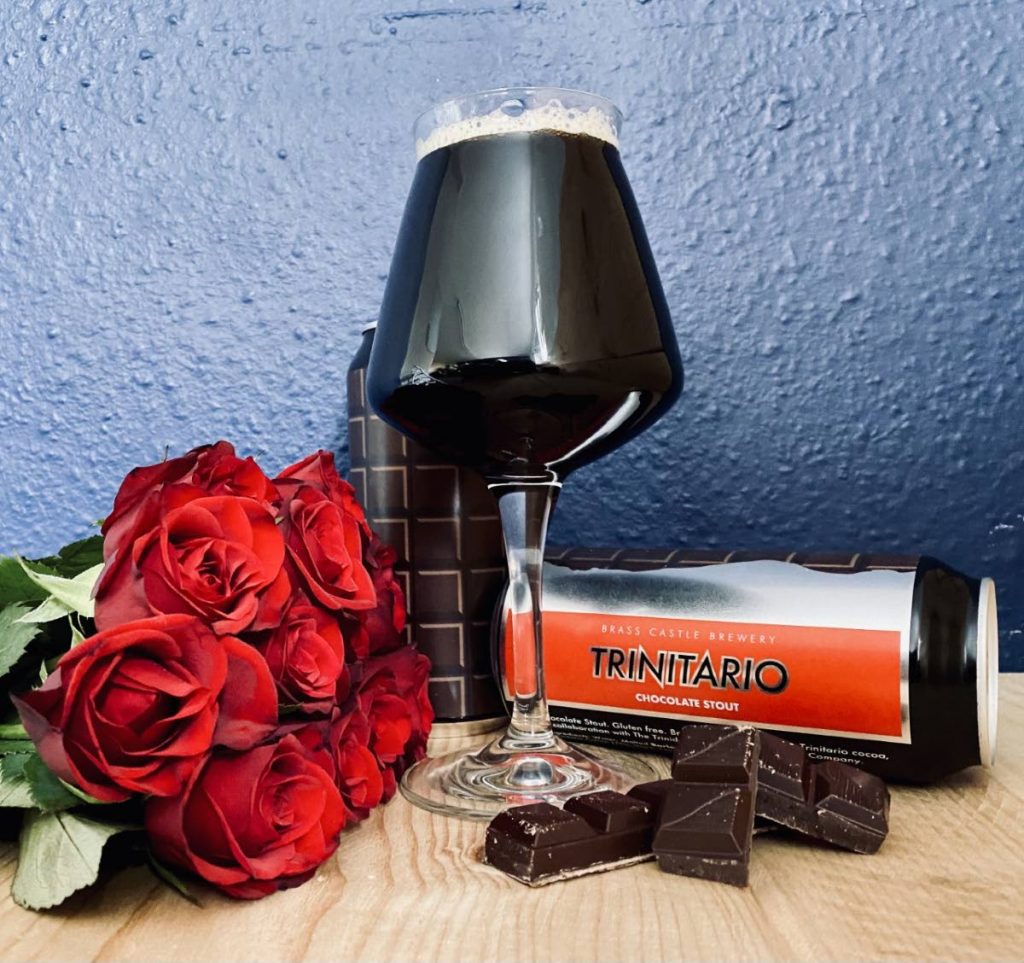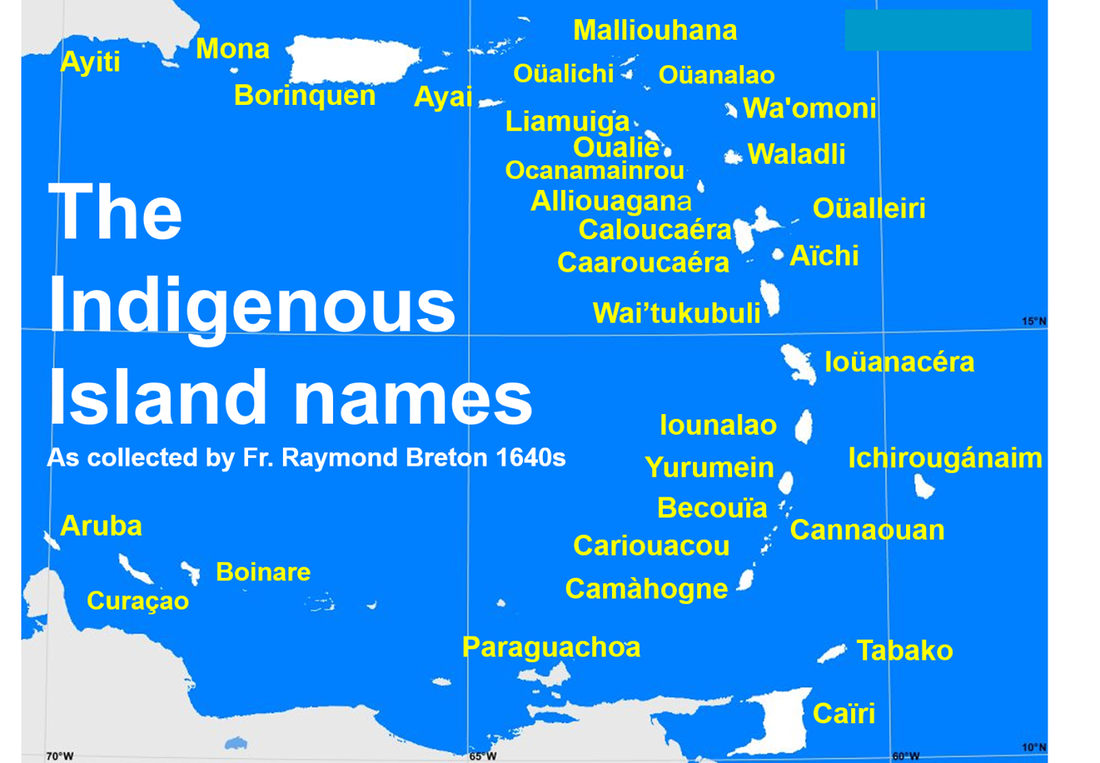|
Arun Kumar Sahu (High Commissioner of India, Port of Spain, Trinidad and Tobago)...... As I drove into the central district of St. James of the capital city of Port of Spain of Trinidad and Tobago, I could not miss the names of the streets. They were named after towns and cities in colonial India such as Agra, Patna, Baroda, Bengal, Calcutta, Cawnpore, Nepaul, Nizam, Madras, Kandahar, etc...... Soon I learnt that the genesis of these names lies in Trinidad’s indenture history. In the 19th century, the indentured labourers from India establish... Read more at: https://english.mathrubhumi.com/travel/features/the-india-connection-of-trinidad-and-tobago-1.5297291?fbclid=IwAR3GnWkrQzJwAshxTTjZo1ZuEeng2i-kioA3TqoGUUawgWBQ_Y6jLzMJz5I Cultural programmes held at Mahatma Gandhi Institute of Cultural Cooperation (MGICC) in Mt Hope | Photo: Special arrangement......
0 Comments
Click here for full article
Angelo Bissessarsingh
South of San Fernando, in a belt of rolling country bordering on the Oropouche Lagoon mangrove swamps was the district of South Naparima. Around 1810-20, two large sugar plantations–Wellington and Woodland–were established on these lands. The soil was exceedingly rich and those fortunate enough to have properties here, reaped rich annual harvests as LAA DeVerteuil recounted in 1857."Not only do the canes ratoon in this soil for many years, but it does not seem to be favourable to the growth of rank weeds; from three to four annual weedings only are required to keep the cane-fields clean and in good condition. The canes generally do not grow to a very large size; but from 20 to 30 shoots from the same." Initially tilled by slave labour, the estates of South Naparima struggled after Emancipation until the introduction of indentured workers from India who began arriving sporadically in 1845 and in earnest after 1849. From 1860-66 and ending around 1880, an incentive of �5 in lieu of a return passage to India was offered in order to encourage the Indians to settle and create a peasant class.Around 1875-80 a number of labourers whose contracts had expired, began to farm the land assiduously, producing prodigious quantities of rice, ground provisions, vegetables and watermelons. Much of this food found a ready market some four miles away in San Fernando. In time, the village they founded became known as Cooliewood. Dire need for a South road Another smaller hamlet began to sprout downhill to the east around 1900, even closer to the borders of Wellington Estate.This was the birth of Debe, although it was then considered amalgamated to Cooliewood. There were no public services in the area and the villages were almost entirely composed of Indo-Trinidadian agrarian peasants.Owing to the quantity of food being produced here, as well as in Penal some five miles south (which had begun as a settlement in much the same fashion around 1900), there was a dire need for a proper road to get the crops to market. To this call, the wealthy planter and owner of Palmiste Estate, Sir Norman Lamont, lent his voice, and in 1912 he announced:"Towards one other matter I have also been able to make some progress, though I am not able to state definitely that the work will be undertaken. I refer to the possibility of our having a direct road from San Fernando to the south, which would run through Palmiste and Canaan by means of a bridge near the mouth of the river Cipero."His Excellency the Governor himself came to see the proposed route, and the matter is now under his consideration. If the road is made, it will, in my opinion, be of great value to all the people on this estate, as giving them a short and direct road to San Fernando for their marketing." A train trackthrough the swamp This road was not commenced until 1915 and eventually became the San Fernando–Siparia Erin Road. This was not to say, however, that Debe was bereft of transport. In 1912 the Trinidad Government Railway (TGR) extended a line towards the settlement in an infrastructure expansion drive to reach Siparia which happened in 1914. A station was put up at Wellington Road with a crossing gate cutting off traffic on the SS Erin Road when the train was moving across.The project of extending a line through the swamps of Debe was considered to be one of the great engineering feats of the TGR since a massive embankment had to be constructed all the way to Penal. Bits of this earthwork and an old bailey bridge are still visible off Suchit Trace. Debe had a Presbyterian church and school since the 1920s which were on a steep incline just south of the village. Owing to severe earth movements, the old school was abandoned and a new building erected a short distance away in the 1990s. Famous for doubles, aloo pies As early as the 1950s, the Wellington Road junction of Debe was becoming famous as a spot for Indian delicacies, particularly doubles and aloo pies. From the 1940s until it closed in the late 1990s, Hummingbird Cinema operated near this place, showing Indian pictures as its staple fare. In 1962 Dr Eric Williams mandated that the name of the original settlement, Cooliewood, should be changed to Gandhi Village, both to honour the most famous Indian statesman in history and to erase the derogatory nature of the name.Today Debe is a bustling commercial area, very different from its humble origins.Source: Trinidad Guardian, March 18, 2021  English brewer Phil Saltonstall was so impressed with TT chocolate that he has brewed beer out of trinitario cocoa beans. - On a recent trip to Trinidad, English brewer Phil Saltonstall was introduced to some of the best tasting chocolate in the world, made, of course, from trinitario cocoa beans. So, naturally, he did what he does best – he made a beer out of it. “If you’re a brewer you look for flavour pairings in the world that exist already and you just put them in the beer,” Saltonstall told Business Day in a telephone call last week. The first batch of Saltonstall’s Brass Castle Brewery’s Trinitario chocolate stout was canned just over two weeks ago and it’s already proved popular. “I have to ringfence a couple so I can send it to Trinidad or else it’ll be gone,” he chuckled. The beer is, of course, named after the eponymous cocoa variety that originated in Trinidad in the late 17th century. Trinitario, a natural hybrid of the forastero and criollo varieties, is considered one of the world’s finest-flavoured cocoas. The Trinidad Fine Cocoa Company, with which Saltonstall consulted, advised him on using trinitario cocoa shells and nibs to enhance the already chocolatey flavours that naturally occur in dark beer. (He was introduced to them through his wife, British High Commissioner Harriet Cross.) “We have done a chocolate beer before, but we’ve done it with cocoa powder – and probably not very good cocoa powder. It was meant to be like a Black Forest gateau, with cherries and chocolate. It was really nice and chocolatey, with the cherries, and that was cool. “I have since been educated to the fact that Trinidad has the best chocolate in the world, and making that connection with TT fine cocoa caused me to understand that I can use cocoa better – that I shouldn’t just be using powder, I should be using cocoa nibs and cocoa shells. So they effectively enhanced my process. "And they also kindly explained that Trinidad has the best chocolate in the world, and if I want to have a real chocolate beer (this is the stuff to use).” Different types of grain and malt (sprouted grain) can give some very gentle chocolate flavours, Saltonstall explained. “You have to look for them, but they are there. What most brewers do is, they will add a chocolate flavouring or essence or something like that. But when I had the option to have some of the best chocolate in the world, that’s obviously (better).” Brass Castle tries to make its base as chocolatey as possible and then overlay that with the fine cocoa nibs during the fermentation and conditioning phases. “The finished beer is very luscious and chocolatey and doesn’t have any of those fake aspects, and that’s all testament to how good the cocoa and chocolate that we’ve used (are).” Beer is made from fermenting cereal grains. The first step is creating a mash, where the grains are mixed with water to form the base liquid and release the sugars that will eventually ferment. Usually, rice husks are used as process aid, preventing the mash from turning into a porridge consistency that needs to be thrown out. Brass Castle Brewery's Trinitario chocolate stout, made, of course, from TT's trinitario cocoa beans. - But, Saltonstall was pleased to discover, cocoa shells did the same job and imbued the mash with a rich chocolate flavour.
“It’s cool, because I didn’t realise that cocoa shells are just kind of thrown away because they’re no good for chocolate, but actually there’s still flavour there, so they are quite good in the mashing process and brewing.” The next phases – fermentation and conditioning – are when the nibs, shelled cocoa seeds broken into pieces that have a deep, rich cocoa flavour, are added to the mix to really bring create that chocolatey, beery goodness. Brass Castle is based in the town of Moulton in North Yorkshire. A few miles away is the city of York, which Saltonstall said has a history of being in the chocolate trade. “I talked to chocolatiers in the town and they are totally thrilled that we are doing something with trinitario cocoa nibs, because they get it. They know how good the nibs are and they know that it’s in relatively short supply. "It's lovely to see them get enthusiastic and passionate about it, and hopefully drinkers will get the same effect.” Saltonstall has not yet tapped into the huge Caribbean diaspora in the UK – covid19 restrictions have made that difficult at the moment, so the usual avenues, like bars, restaurants and even Notting Hill Carnival have been restricted. He’s interested in looking into it, though, and even directly reaching out to some high-profile Trinis and sending them some of the beer. “In normal times this would be obvious and it would be nice to get the feedback from the diaspora.” Brass Castle is a small craft brewery, so it produces about 4,000 440ml cans of beer at a time. He’s all but used up his initial 25-kg supply of shells and nibs in production, so he’s actively researching how to import a supply. “I was lucky because I was able to transport this back from Trinidad myself, but I’m now talking to people who can ship it. I’m told shipping is pretty straightforward because (despite covid19 restrictions) commerce is still working and goods are still transiting. So my understanding is that getting hold of some more is not problematic. "Of course, everything is slightly more difficult now but getting more nibs and shells is not (impossible).” He’s excited to start back production, though, and already envisions the beer being a regular offering. It’s on sale at the brewery and online, as well as some shops. It also proved to be a surprise Valentine’s Day hit, with lots of orders coming in before February 14. He also hopes to be able to send some soon to Trinidad – and maybe get a new supply of nibs in return. And as far as he’s concerned, even though some people might see chocolate stout as a dessert drink, the beer will go with anything. “People drink and eat what they like to eat. I know there’s a whole host of people who would want to drink it all the time.” The labelling. though, is reminiscent of a chocolate bar in the colours of the TT flag. “I might change the packaging at some point, but I hope that the name and the look are simple enough for people to understand quickly what it is, but also for people who know to appreciate that it’s a Trinidadian beer with Trinidadian ingredients.” Source: Newsday Feb 2021 Canadian actor Brandon Jay Mclaren stars in Netflix series Firefly Lane. He was born to a Trinidadian mother and Grenadian father. If you have seen Firefly Lane on Netflix, chances are you would have seen Brandon Jay Mclaren in action.
The 40-year-old actor was born in Canada to a Grenadian father and Trinidadian mother. Mclaren plays Travis on the new Netflix series which was the number one trending show in Trinidad and Tobago and across the world. The series is based on the bestselling novel by Kristin Hannah. Mclaren’s character is not featured in the novel but was written in the Netflix series. As Travis, Mclaren plays an earnest love interest to Sarah Chalke (Scrubs) one of the stars of the series along with Katherine Heigl (Gray’s Anatomy). This is his first Netflix series and has garnered him a lot of attention. He told Loop News that even though he appeared on a show called The Killing which was nominated for six Emmys, the buzz around this show is different from anything else he has experienced. “There is something different about Netflix because it is sort of like a shared viewing experience. Everyone could watch it one time and everyone talks about it one time so there is a certain energy around a Netflix show more than anything else I have experienced,” he said. Speaking about the experience on the series, Mclaren said he has worked a lot with Chalke in the past who he described as one of the funniest people he met. “I used to watch her on Scrubs before my career really started to take off and I was such a fan and to be able to work opposite her I find myself pinching myself in the middle of a scene,” he said. He said both Chalke and Heigl are fantastic actors. Confessing that he is yet to watch the series, Mclaren said they had a lot of fun and laughter during the filming which wrapped last February. Despite his busy schedule, Mclaren finds time to visit his family in the Caribbean and hopes to travel to the region soon. Mclaren was last in T&T during Carifesta in 2019 where he conducted an acting workshop. It was his first trip back since 1999 but Mclaren visits Grenada annually where he is part of a charity there called Reach Within. He helped to raise US$20,000 for the charity when he ran the New York marathon in 2019. Mclaren has been acting since the age of 12. “My mum put me in commercials when I was 12 in Canada and in the first year I got in five commercials and when I got braces they said to call back when the braces came off,” he recalled. He took a break from acting when he won a full soccer scholarship to play football in New York at the University of Albany. He said he wanted to act again but his mother told him to forget about it and finish his degree in Human Biology. “In his in last year, I got a role in a play and I said maybe I will take a year off after University and I went back to Vancouver. After the first year, I got commercials and that turned into one-liners and two liners, I have been lucky. “ Mclaren has had roles on television shows such as Chicago Fire (NBC), Slasher (Chiller Network), Girlfriends' Guide to Divorce (Bravo), Falling Skies (TNT), Harper's Island (CBS) and The Killing (AMC), for which he was nominated for a 2012 Leo Award for Best Supporting Performance by a Male in a Dramatic Series. He did three seasons as Oliver Yates on CBS’ Ransom and starred as undercover agent Dale Jakes on USA’s Graceland which was his favourite role. “I loved the cast, the creator Jeff wrote for my character in such a way that it was a full human being,” he said. Mclaren won a Best Actor Maple Ward in 2015 for that role. The actor is currently in Vancouver filming a reboot of Turner and Hooch which will air on Disney+ later this year. He said he has plans to tell Caribbean stories and currently has a project in development that he described as a Caribbean forward story. He said: “Now more than ever people are open to diverse stories from people that look different with different experiences. I am trying to take whatever momentum I can and parlay that into doing some more behind the scenes in producing and developing stories that empower people like us.” Source: T&T News, Feb 2021 Garvey in new movieLOOP ENTERTAINMENT CREATED : 27 FEBRUARY 2021ENTERTAINMENTWinston Duke
Share to FacebookShare to TwitterShare to LinkedInShare to WhatsAppShare to MessengerShare to EmailShare to TelegramShare to More18Winston Duke will portray Marcus Garvey in an upcoming movie. The Tobago-born actor, who broke into global fame playing M’baku in The Black Panther film, will portray the Pan-Africanist in the Amazon movie Marked Man. The movie will be directed by Andrew Dosunmu. According to Deadline, the film is said to be partly inspired by the Colin Grant biography Negro with a Hat: The Rise and Fall of Marcus Garvey. Set in the 1920s, Marked Man follows a young black man who joins J. Edgar Hoover’s Federal Bureau of Investigation and then infiltrates Garvey’s UNIA organisation, testing his loyalty to both race and country as he grows weary of both men’s actions. The script is by acclaimed playwright Kwame Kwei-Armah. Marcus Moziah Garvey was born on August 17, 1887 in St. Ann’s Bay, Jamaica. He was the leader of the Pan-Africanism movement, which sought to unify and connect people of African descent worldwide. He was the founder of the Negro World newspaper, the Black Star Line shipping company, and the Universal Negro Improvement Association, or UNIA, a fraternal organisation of black nationalists. Garvey died at the age of 52 in London in 1940 from complications brought on by two strokes. Commenting on the role, Duke said on Instagram that he was honoured as a Caribbean man to portray Garvey. He wrote: “Man, where do I begin. As a Caribbean immigrant, activist, and global citizen, one of the most seminal stories in my development has been the words and works of Marcus Garvey. Today I am blessed to announce that I have the opportunity to bring his story to life, along with a kick-ass crew of collaborators. It’s not lost on me how important and meaningful this is, not only for the generations that already know his contributions to the Black liberation landscape but for those who have yet to know and embrace him and what he stood for. Can’t wait to step into this one and bring you all along for the amazing journey. Source: T&T News, Feb 27, 2021 Cher-Mère Day Spa owner and operator Dr Aba Mortley. WHEN Dr Aba Mortley opened her first Cher-Mère Day Spa in Kingston, Ontario, Canada, she was continuing her family's beauty business legacy from Trinidad. And last month she continued to make that legacy proud when she won her category in the Rise Up Pitch Competition, an online black Canadian business competition, and secured a covid19 innovation grant.
According to the Rise Up website, the competition "is an opportunity for Black women entrepreneurs, at any stage of business, to shine and pitch for the chance to win thousands of dollars in financial awards and resources." The site added: "This program has been designed to help Black women entrepreneurs develop key skills, build their networks, and receive the support they need to succeed." All about community Mortley, speaking to Newsday in a telephone interview, said she received the information about the competition from multiple sources. She explained she is very active in Kingston as a member of different community agencies including WE-CAN Women Entrepreneurs organisation out of Queen's University (her alma mater) and, more recently, the Black Business and Professional Association (BBPA). She is also chair of Tourism Kingston and co-chair of the Queen's University council. "One of the pillars of Cher-Mère's business in TT and Canada is community. In order to be successful, you need a greater network structure and giving back is important. We do so many community things and people send info to help us. It flows both ways." She recalled last year following the George Floyd killing in Minnesota she was involved with the community group Let's Talk Kingston and hosted panels with the mayor, police chief, black and indigenous platforms. "It was a safe space to ask questions and challenge beliefs and thoughts." She said the city is aware of the activities of the business and is very supportive of small businesses. Asked why she entered the competition, Mortley said covid has been very difficult on her two spa locations in Kingston. "We employ more than 15 people and we worked hard to minimise that loss. There were several periods where we just shut down." She said however, they did a good job in switching gears and promoting the product via online sales through Cher-Mère in a box, and she was able to retain staff. She described the Rise Up competition as a good opportunity to showcase how they could maximise the grants and support the business. "(The grant) and winning the competition would continue to keep the momentum up and keep the trajectory upwards." Mortley explained the competition had several components, starting with a first round where they asked generally about the mission and vision, an overview of what the business did, and what the funds from the grant would be used for. For the second round, they asked for more details, a succinct business plan, measurable targets, and tangible things the business did to substantiate the claim there was successful recovery from the impact of covid. The pitch Mortley made it to the finals, the live pitch competition on February 26 where she would go up against two other finalists in her category. "It was a great opportunity. Even if I didn't win it was just a learning opportunity and it would open a few more doors." She recalled the competition provided her and the other participants with a lot of seminars on marketing and other topics, and she was given a one-on-one pitch coach. She also received help with her pitch from her fellow BBPA members. The time limit for the pitch was six minutes and it was before about five or six judges and then two minutes for judges' suggestions or questions. Of the three finalists, Mortley was up first. And how was the experience of the pitch? "It was quite funny. My family has been making Cher-Mère products for a very long time. I grew up in the business. I know it like the back of my hand. I just had to say my family history." She compared the experience to when she had a project in school and though you thought it was really good there was still a lot of nerves about whether it was the winning project. "I calmed myself. I thought regardless of what happens the experience is a good one. Win or lose it will not be the end-all or be-all. And I prepared the best I could and gave it my best shot. No matter what I'm still winning." Mortley's mother Cheryl Bowles was watching the pitch live and said her daughter "nailed it." "She was fluent, energised, knowledgable, to such an extent that all the judges praised her and her energy. She was asked questions by all the judges." She recalled Mortley started with the story of Cher-Mère being a four-generation journey from her great grandmother using natural ingredients like cucumber to soothe and tone skin, egg whites and magnesia for facial masks, then to her grandmother an esthetician and hairdresser, to her mother a biochemist (Bowles), who left her job to pursue Cher-Mère on the advice of her own mother. Mortley also shared how she was part of Cher-Mère in TT and upon reaching Canada saw limited options for skin and hair care products for black people. "She described Cher-Mère natural products and its sustainability for 35 years in a very multiethnic market, innovation in Canadian online sales with Cher-Mère in a box, the box was environmentally friendly (one judge says she liked the eco-friendly environmental approach); the use of social media to increase her online sales by 1660 per cent with this innovation, tracking return on investment, and Prizm (digital marketing agency) tracking. In the end, she also grew her return customers from 18 per cent to 42 per cent within the one year of covid. Her next step is to take Cher-Mère globally." Bowles said her daughter was "beyond and above her game." Surprise win Mortley said after the pitch the winners would be notified via e-mail. When she did not receive one she thought someone else had won. But she tuned in for the prize-giving ceremony to support the other women there and to see who won. "When they called my name I was like 'what is happening?' It was a slightly out-of-body experience. I was shocked." At the time she was speaking with her mother via WhatsApp and when the announcement was made her mother cheered and her husband also came into the room and congratulated her. "It made me so emotional I almost broke down." Bowles noted the win opens many doors for her daughter in Canada and globally. "If she did not know it before, Aba has re-cemented and established her mark as Cher-Mère brand persona, next generation. The baton passing over the years has been a wonderful success culminating in this exciting event." Mortley said the winners will be receiving compensation and it will be used towards continuing advertising and the programme they have set out. She also said it opened up doors to sell the products on other platforms. She recalled she always grew up with plans to have Cher-Mère globally. "The product is really good and people use it. It is how to get from now and to where people start echoing 'I know Cher-Mère.'" She viewed the business as a relay race and family legacy that she was continuing. She added she was grateful to the business community in Kingston for their support. "I couldn't be where I am without that whole village." About Dr Aba Mortley Aba Mortley moved to Kingston, Ontario from TT to do an undergraduate degree in engineering at Queen’s University, followed by a Masters and PhD in Materials and Chemical Engineering at the Royal Military College. In 2013, Mortley opened the first Cher-Mere day spa, using the family’s name brand Cher-Mere products, in downtown Kingston and expanded to open a second location in 2018. She is currently the chair of the Tourism Kingston board, co-chair of Queens University Council on Anti-Racism and Equity, member of the downtown business association board, member of the Kingston Economic Recovery Team (KERT) and chair of the subcommittee for underrepresented groups in the Workplace for KERT. For over 20 years Mortley has actively volunteered at Youth Diversion. Along with her partner Ted, they enjoy raising four young children, Wyatt, Ryder, Meredith and Otto. More recently, Mortley has been organising panel discussions through the Kingston Let’s talk platform to share and normalise the dialogue about the lived experiences for racialised members of the Kingston community and how we can all work together to make a more equitable and anti-racist future. Source: Newsday March 16, 2021 THE INDIGENOUS ISLAND NAMES
From the time of the earliest human settlement of the islands that became known as the Lesser Antilles or the Eastern Caribbean, indigenous adventurers coming from the Orinoco region of South America, were giving names to the islands that they discovered. Most of these names related to the natural resources, wildlife, or type of landscapes that they found on these islands. When Columbus and later arrivals from Europe sailed among the islands for the first time they renamed them without even asking about the original names. Consumed with the myths of late Medieval Christianity, they imposed religious names of Christiandom upon these islands, most of which are the official names still used today. In the 1640s, a French missionary, Fr. Raymond Breton, settled for some years in Guadeloupe and Dominica. He travelled among the islands asking the indigenous Kalinago people what their names of the islands were. On this map we use the names that Fr. Breton collected, although since the 1500s other Europeans had also been collecting names and there is a confusion depending on the sources used. Breton, for instance, is told that Trinidad is Chaleibe, but Walter Raleigh, some fifty years before says it is Caire, which he acknowledges. Smaller, less visited islands such as Bequia, Cannouan, Carriacou, Aruba, Bonaire and Curacao, kept more or less the pronunciation of their original names. The spelling has also changed over the centuries: What Breton records for Dominica as Ouaitoucoubouli, is now more phonetically written as Wai'tukubuli. St. Lucia, Iounalao, has become, Hewanorra. The meanings of the names is also much debated. But whatever the differences, it gives us a taste of what this indigenous island world was like when there was total freedom of movement and trade and interaction, from the mainland up the islands and beyond. Source: Waitukubuli Virtual Museum, March 4, 2021 |
T&T news blogThe intent of this blog is to bring some news from home and other fun items. If you enjoy what you read, please leave us a comment.. Archives
June 2025
Categories
All
|








 RSS Feed
RSS Feed